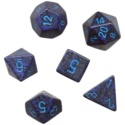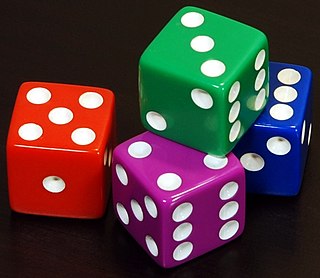
Dice are small, throwable objects with marked sides that can rest in multiple positions. They are used for generating random values, commonly as part of tabletop games, including dice games, board games, role-playing games, and games of chance.
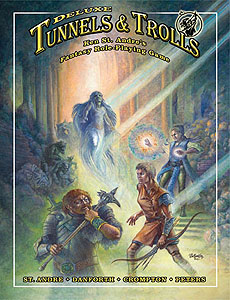
Tunnels & Trolls is a fantasy role-playing game designed by Ken St. Andre and first published in 1975 by Flying Buffalo. The second modern role-playing game published, it was written by Ken St. Andre to be a more accessible alternative to Dungeons & Dragons and is suitable for solitaire, group, and play-by-mail gameplay.

A wargame is a strategy game in which two or more players command opposing armed forces in a simulation of an armed conflict. Wargaming may be played for recreation, to train military officers in the art of strategic thinking, or to study the nature of potential conflicts. Many wargames re-create specific historic battles, and can cover either whole wars, or any campaigns, battles, or lower-level engagements within them. Many simulate land combat, but there are wargames for naval, air combat, and cyber as well as many that combine various domains.

Miniature wargaming is a form of wargaming in which military units are represented by miniature physical models on a model battlefield. The use of physical models to represent military units is in contrast to other tabletop wargames that use abstract pieces such as counters or blocks, or computer wargames which use virtual models. The primary benefit of using models is aesthetics, though in certain wargames the size and shape of the models can have practical consequences on how the match plays out.

Advanced HeroQuest is a board game published by Games Workshop in 1989, a sequel to HeroQuest.

Fuzion is a generic role-playing game system created by the collaboration of R. Talsorian Games and Hero Games. The rights to Fuzion are jointly held by Mike Pondsmith of R. Talsorian Games, along with Steve Peterson and Ray Greer of Hero Games. Fuzion is a combination of the Interlock System,, and the HERO system. Fuzion is an adaptable system which can be played in any genre and setting imaginable.
In some role-playing game (RPG) systems, the dice pool is the number of dice that a player is allowed to roll when attempting to perform a certain action.
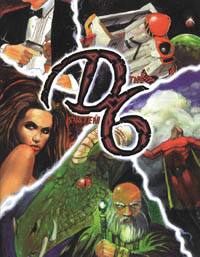
The D6 System is a role-playing game system published by West End Games (WEG) and licensees. While the system is primarily intended for pen-and-paper role-playing games, variations of the system have also been used in live action role-playing games and miniature battle games. The system is named after the 6-sided die, which is used in every roll required by the system.

DC Heroes is an out-of-print superhero role-playing game set in the DC Universe and published by Mayfair Games. Other than sharing the same licensed setting, DC Heroes is unrelated to the West End Games DC Universe or the more recent Green Ronin Publishing DC Adventures game.

An attribute is a piece of data that describes to what extent a fictional character in a role-playing game possesses a specific natural, in-born characteristic common to all characters in the game. That piece of data is usually an abstract number or, in some cases, a set of dice. Some games use different terms to refer to an attribute, such as statistic, (primary) characteristic or ability. A number of role-playing games like Fate do not use attributes at all.
In the Dungeons & Dragons role-playing game, game mechanics and dice rolls determine much of what happens. These mechanics include:

Mercenaries, Spies and Private Eyes (MSPE) is a tabletop role-playing game designed and written by Michael A. Stackpole and first published in April 1983 by Blade, a division of Flying Buffalo, Inc. A second edition was later published by Sleuth Publications in 1986, but Flying Buffalo continues to distribute the game. In 2019 a new revised Combined Edition of MSPE was published by Flying Buffalo which brought the different material from the previous editions and included additional new rules and expansions to the original rpg. MSPE's mechanics are based on those of Tunnels and Trolls, with the addition of a skill system for characters. A few adventure modules were also released for MSPE.

A statistic in role-playing games is a piece of data that represents a particular aspect of a fictional character. That piece of data is usually a (unitless) integer or, in some cases, a set of dice.
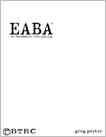
The End All Be All game system, commonly known as EABA and pronounced "ee-buh", is a role-playing game system from Blacksburg Tactical Research Center (BTRC). It is a generic gaming system designed to adapt to any imaginary gaming environment. It was created by Greg Porter in 2003. The game cites the Hero System, GURPS and Call of Cthulhu as influences in its development.
Warhammer 40,000 Roleplay is a role-playing game system with multiple source books set within the Warhammer 40,000 universe. The first game using the system, Dark Heresy, was created by Black Industries, which closed soon after the initial release. Official support by Fantasy Flight Games was discontinued in September 2016. The license was later acquired by Ulisses Spiele, who published a new game, Wrath & Glory, in 2018.
The Standard RPG System is a Japanese role-playing game system developed by FarEast Amusement Research and used in Alshard, Tenra War, Kaze no Stigma RPG, Shinkyoku Sōkai Polyphonica RPG and so on. The newest, the 14th game that use SRS are the Full Metal Panic! RPG based upon the anime and light novels of the same title. SRS games are published by several companies such as Game Field, Softbank Creative, JIVE and Kadokawa(Former Enterbrain and Fujimi Shobo).

QAGS is a generic tabletop roleplaying game. Setting for this system have varied and ranged widely.
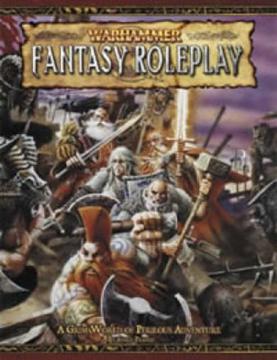
Warhammer Fantasy Roleplay or Warhammer Fantasy Role-Play is a role-playing game set in the Warhammer Fantasy setting, published by Games Workshop or its licensees.
The Star Wars Roleplaying Game is a tabletop role-playing game set in the Star Wars universe, first published by Fantasy Flight Games in 2012. It consists of different standalone cross-compatible games where each one is a separate themed experience. The sourcebooks support games set from the Clone Wars era to the original Star Wars trilogy era; there is limited support for the Star Wars sequel trilogy era. Since 2020, the game line has been maintained by Asmodee's subsidiary Edge Studio.

Judge Dredd: The Role-Playing Game is a science fiction role-playing game published by Games Workshop in 1985. A second edition was published in 1989.
